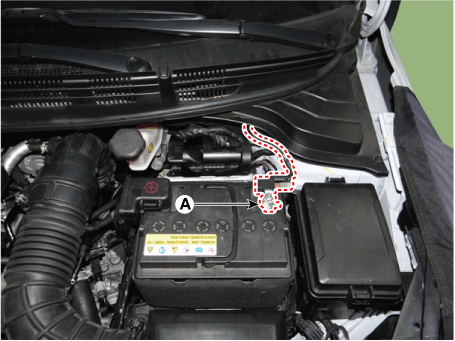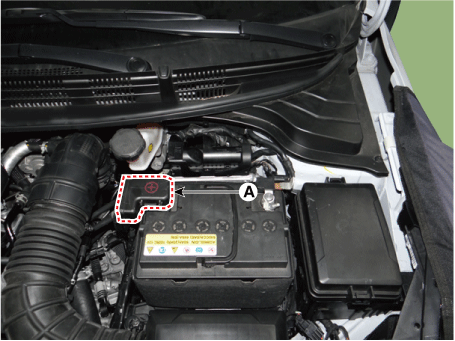Kia Rio: Maintenance / Battery
Repair procedures
| Inspection |
Battery Voltage and Status
Check the battery voltage and status using the battery tester.
Battery Terminal
| 1. |
Move back and forth to check that the battery terminals (A) are loose or corroded.If the terminals are corroded, clean them.
If battery positive connection is loose, disconnect ground(GND) cable first before attempting to remove or tighten plus connection, to prevent personal injury. |
| 2. |
If the battery clamp on battery positive (+) terminal is not seated securely:
|
| 3. |
If the battery clamp on battery negative (-) terminal is not seated securely:
|
Battery Condition
Check the battery for damage or deformation. If severe damage, deformation or leakage is found, replace the battery.
 Air Cleaner Filter
Air Cleaner Filter
Repair procedures
Inspection
1.
Remove the air cleaner element.
2.
Check that the air filter is excessively dirty.
If the air filter is exces ...
 Cooling System
Cooling System
Repair procedures
Inspection
Radiator hoses
1.
Check radiator hoses for the following
(1)
Improper attachment
(2)
...
Other information:
Kia Rio 2017-2025 YB Owners Manual: Checking the amount of air conditioner refrigerant and compressor lubricant
When the amount of refrigerant is low, the performance of the air conditioning is reduced. Overfilling also has a negative influence on the air conditioning system. Therefore, if abnormal operation is found, have the system inspected by an authorized Kia dealer. The refrigerant label is loca ...
Kia Rio 2017-2025 YB Service Manual: Drive Belt
Repair procedures Removal and Installation 1. Remove the engine room under cover. (Refer to Engine and Transaxle Assembly - "Engine Room Under Cover") 2. Remove the drive belt. (1) To release the tension, t ...


